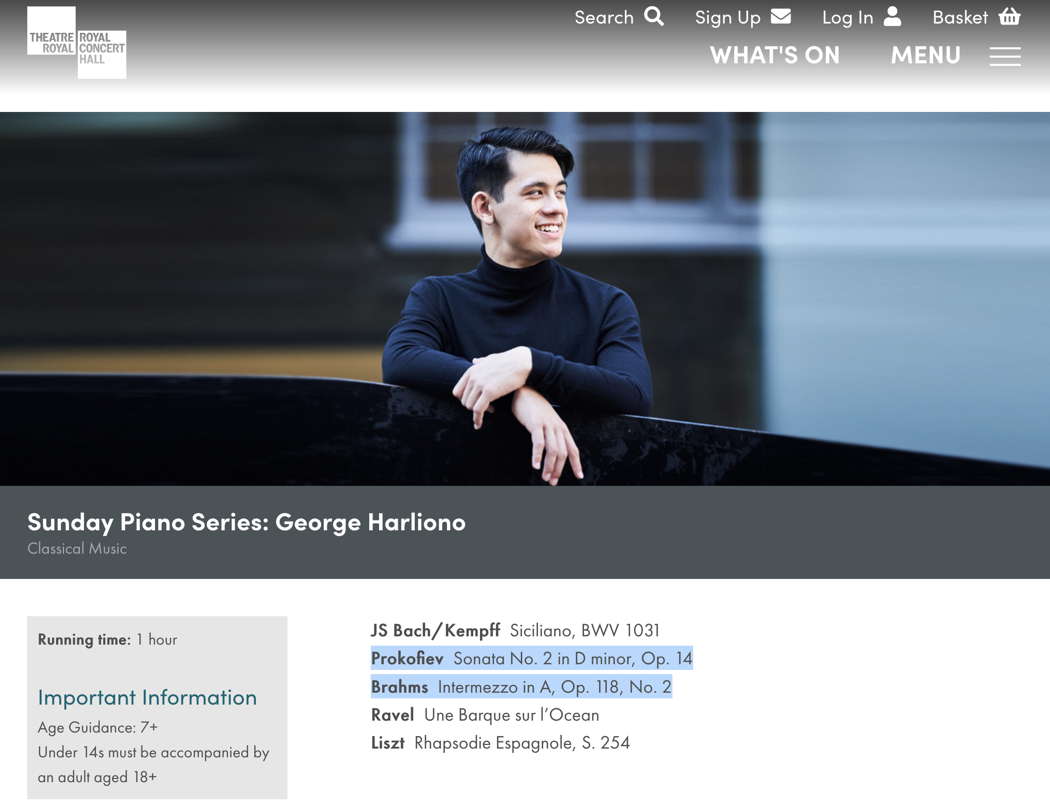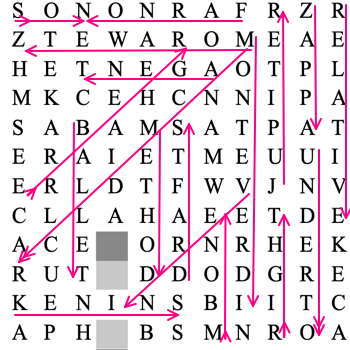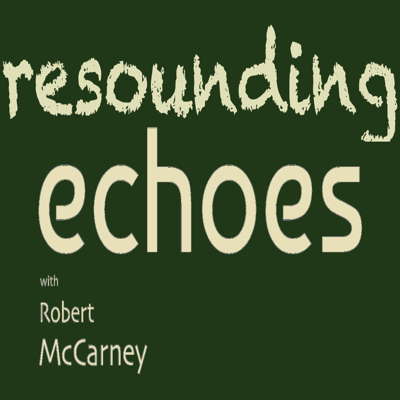- Albert Schweitzer
- Patricia Janečková
- Longborough Festival Opera
- Bob herceg
- Piero Buscaroli
- Eric Owens
- Kirov Ballet
- Radio Flowers Orchestra
A Wide Chronological and Stylistic Range
MIKE WHEELER listens to British pianist George Harliono
London-born pianist George Harliono was the youngest-ever recipient of a Royal College of Music scholarship, in 2017, by which time he already had a number of top competition prizes under his belt. His varied programme – Royal Concert Hall, Nottingham, UK, 30 January 2022 – covered a wide chronological and stylistic range, beginning with Wilhelm Kempff's transcription of the Siciliano from the Flute Sonata, BWV 1031, attributed to J S Bach. There was a tendency to over-romanticise, but this didn't impair the music's flow.
Prokofiev's Piano Sonata No 2 is a typical product of his 'bad boy' phase, and Harliono entered its world readily, juggling the first movement's mercurial switches of mood and texture with apparent ease. He responded to the sardonic scherzo's balletic qualities, and its numerous hand-crossings, with flair. In the third movement he kept the balance between the lyrical theme and the insistent accompanying figures on a knife-edge. His command of the music's momentum in the tarantella-style finale gave the sudden withdrawal into a quiet place all the more impact.

Nottingham Royal Concert Hall online publicity for George Harliono's recital
He made a quiet meditation of the gentle slow waltz that is the second of Brahms' Six Pieces, Op 118, though a little too much rubato tended to pull focus. On the other hand, in Une Barque sur l'Océan, from Ravel's Miroirs, he let the delicate washes of sound and the shifts of harmony make their effect without obvious underlining, and the piece positively shimmered in response, while the thematic ideas were always clear.
Une Barque sur l'Océan is one of the works in which Ravel's debt to Liszt is evident, and the link was neatly made in Harliono's way with the opening of Liszt's Rhapsodie Espagnole. The piece is based on two Spanish dance tunes. After the introduction, 'La Folia' starts in the bass, and Harliono allowed it build its way through the texture without forcing the issue. The arrival of 'Jota Aragonesa' brings a change of mood, and its skittish energy was agreeably playful in his hands.
One of Liszt's Schubert song transcriptions, 'Ständchen' from Schwanengesang, made a tranquil conclusion, and neatly looped back to the opening.
Copyright © 13 February 2022
Mike Wheeler,
Derby UK

ARTICLES ABOUT NOTTINGHAM ROYAL CONCERT HALL




